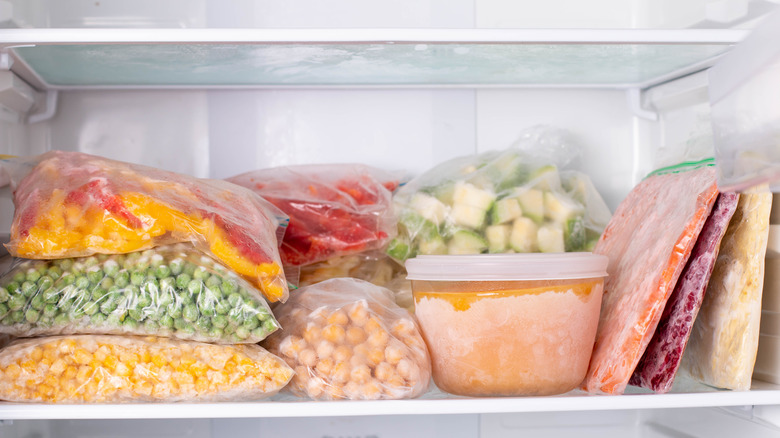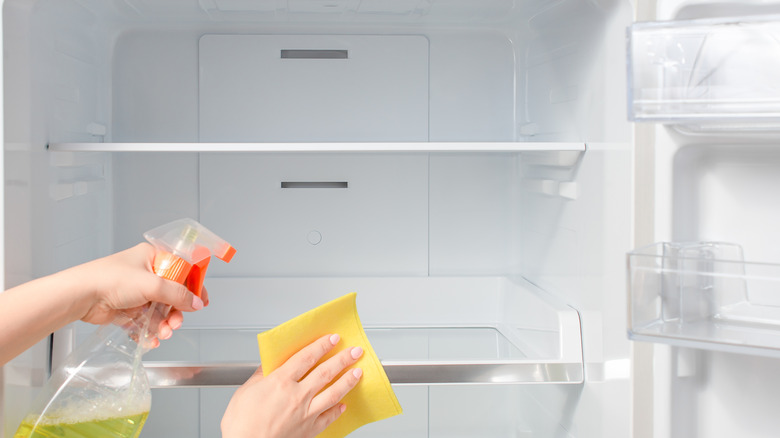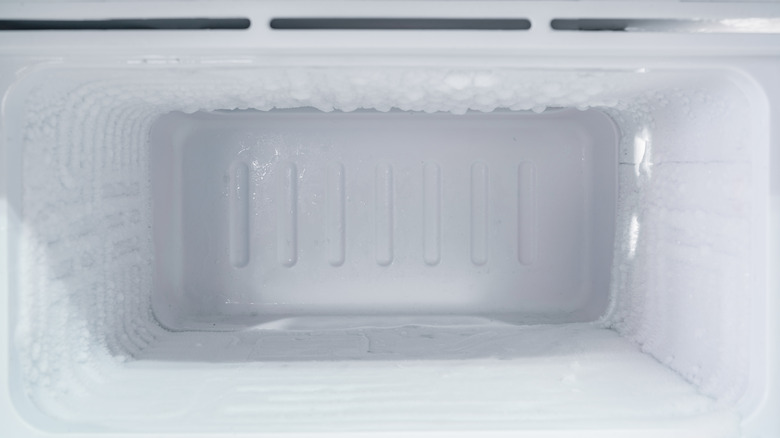How Often Should You Be Cleaning Your Freezer?
Back in the 1970s and 1980s, cleaning the freezer was quite an ordeal. Your parents or grandparents may have set aside a whole day to clean the commonly used appliance. They prepped early on by boiling pots of water to place inside in an attempt to melt the thick blanket of solid frost that had grown along the top and sides (via Bob Vila). Of course, holding a blow dryer up to the ice-laden box was another option. Then when the frost melted a bit, it was time to chip away at it with a butter knife. When fortunate, a big block would break off somewhere around noon.
Luckily those days are over. Freezers now come in frost-free versions, are much easier to maintain, and they are also way more energy efficient now. An average fridge uses about half the energy that one did back in 1970 (via Big Chill).
While cleaning your freezer may not be high on your priority list, it should be still. Here's why.
A quick weekly clean-up is necessary
Unlike in our parents' time, cleaning the freezer doesn't have to be an all-day thing anymore. With a regular weekly wipe-down, you can address the most basic aspects of cleaning and that will help keep your whole refrigerator in optimal working order. It will also keep the surfaces free from germs.
Despite popular belief, freezing doesn't actually kill germs and bacteria. It simply "inactivates any microbes, bacteria, yeasts and molds" according to the U.S. Department of Agriculture. Additionally, foods must reach zero degrees Fahrenheit to do so. This means that before food lowers to that temperature to inactivate it, it can still contaminate. On the flip side, when the food thaws, the bacteria and microbes become active once again and can infect surfaces.
A weekly clean-up is easy and only takes a few minutes. According to Taste of Home, you need to wipe down the inner surfaces, including the top and bottom, and the sides of the freezer with a warm dishcloth covered with dishwashing liquid. It's also important to disinfect the freezer handle and the outside door, a place that will never reach zero degrees and can harbor potential pathogens from touching the door with raw meat or any kind of bacteria on your hands. Spills should be cleaned up promptly so they have no chance to stick.
A deep clean is needed at least once a year
Though modern freezers do their best to prevent ice build-up, frost can still occur. General Electric explains that it happens when "moisture comes into contact with the evaporator coils inside your freezer and then freezes," per Reader's Digest. It can happen whenever hot food is placed in the freezer before it has time to cool off or when just leaving the door open too long.
If you have frost in your freezer, you must first remove that before cleaning it — though with most freezers now, you likely won't have to deal with that. When you deep clean your freezer, it requires that you remove all the food and thoroughly clean the inside and outside. On the outside, that involves cleaning the coils, which can be vacuumed or brushed (via NBC's "Today"). Keeping coils dust and for pet owners, fur-free, helps the unit run more efficiently and last longer. However, some models have the coils kept inside and may not be accessible.
The good news is that if you do a weekly clean-up, this annual deep clean should only take about an hour.


